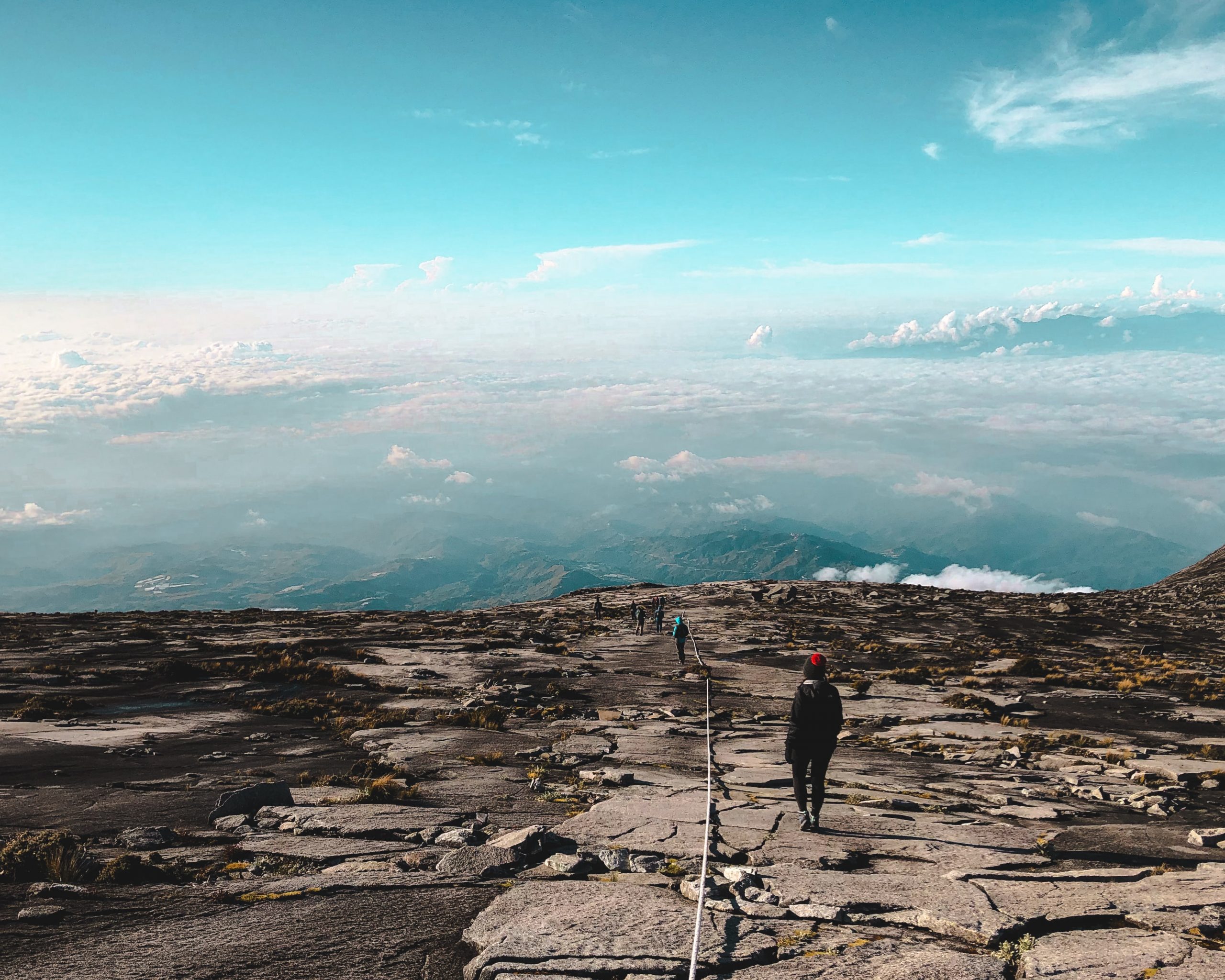
A Journey In Borneo With Sea Nomads
Published on Nil | by rehahnphotographer.com
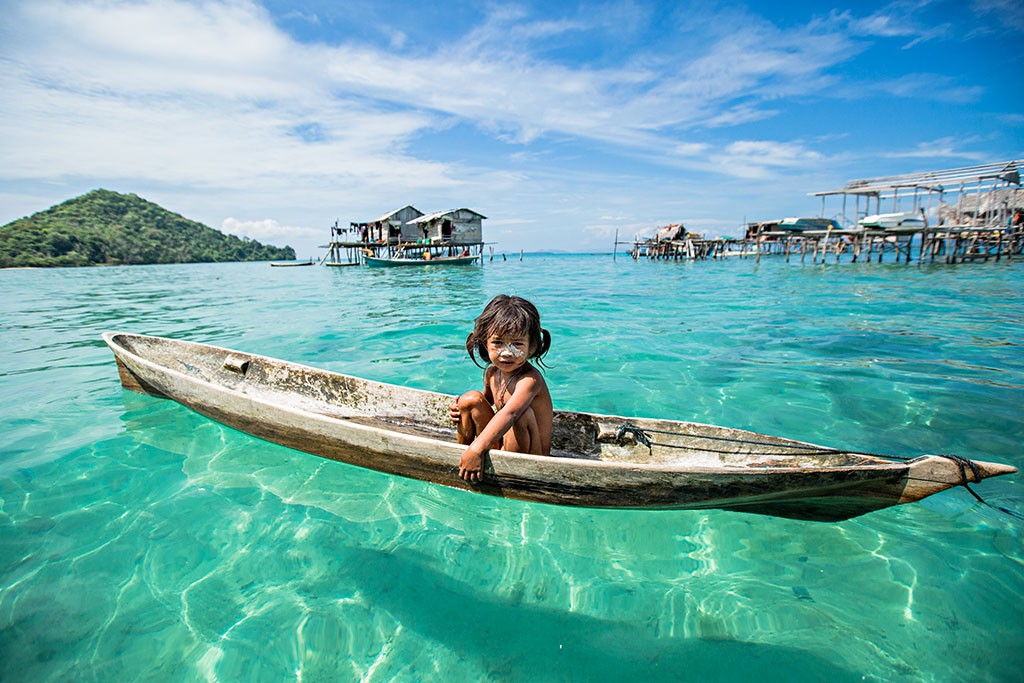
As a photographer, I’ve gone to the ends of the earth. In 2015, I decided to go to the depths of the sea to meet the Bajau water nomads.
WHO ARE THE BAJAU?
The Bajau have lived on the waters off the coasts of Malaysia, Indonesia, and the Philippines for centuries.
Their floating homes keep them connected to the sea at all times, though their distance from the mainlands also keep them disconnected them from modern civilization. Perhaps, this divide is part of what allows them to maintain their way of life and ancestral traditions despite the influences of globalization.
THE EXPEDITION
My voyage to meet these mysterious people was no smooth ride. The real obstacle course to reach the islands started in Kuala Lumpur. I touched down there after a several hour flight from Vietnam. Another airplane took me to Tawau in the Sabah region of Malaysia. From there, I caught a bus to the harbor town of Semporna, one of the largest cities in Borneo.
Tourists typically depart from Semporna to reach the incredible dive sites that Malaysia has to offer.
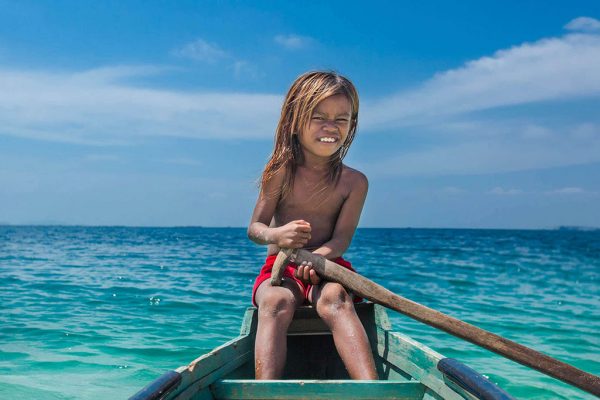
I expected the next step to be easy. I simply needed to find a boat and cross the Celebes Sea to the Bajau. This part of the journey should have taken me about an hour.
I was surprised by how difficult it was to convince anyone to charter a boat for me. The few specialized agencies in the area refused to sail anywhere other than the tourist-centered resorts.
In recent years, tourist kidnappings and pirate boats had sadly become common in the area. Throughout the early 2000s, a spree of abductions had made international news and put the islanders on high alert.
Frustrated yet determined, I decided to try to find a solution on the pier. I walked for hours along the waterfront, approaching fishermen who had moored their boats for the day. Each one declined my offer. Unfortunately, no one spoke English, and I didn’t have the aid of a translator to convince them.
I had no choice but to sleep on-site, being careful to stay on guard and keep my head down. Kidnap-for-ransom groups sometimes track down holidaymakers and then demand an exorbitant ransom for their release. Moreover, in November 2013, a Taiwanese tourist was killed in the resort where he was staying. His wife was held hostage for more than a month before being released.
Tension was omnipresent in this seemingly idyllic destination.
I could see soldiers from the Malaysian army in their olive uniforms and red berets in the main tourist areas. Though, they were unlikely to be present on the remote islands that I sought.
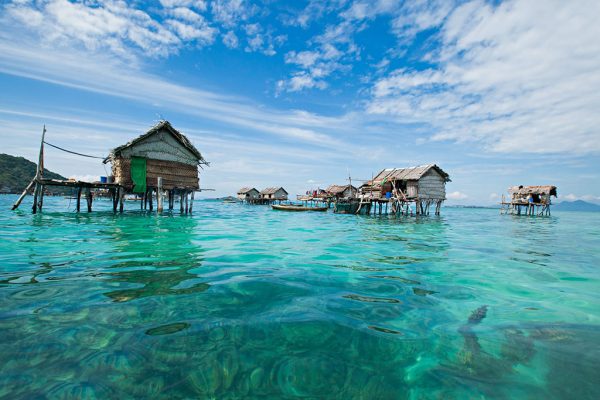
SUCCESS AT LAST
In the heart of this unstable environment, concerned for my safety, I was ready to give up. Yet, each day I continued to walk around the island attempting to communicate my mission to the locals.
Finally, I met a man named Karim, who could speak a few words of English. Luck was with me, not only could he help translate, but he was also from the Bajau ethnic group himself.
Karim was surprised by my desire to meet the local tribe. Most visitors to the area are divers who wanted to be taken straight to the lagoon’s coral reefs.
Karim accepted to be my guide, and we embarked on an expedition through Malaysian waters.
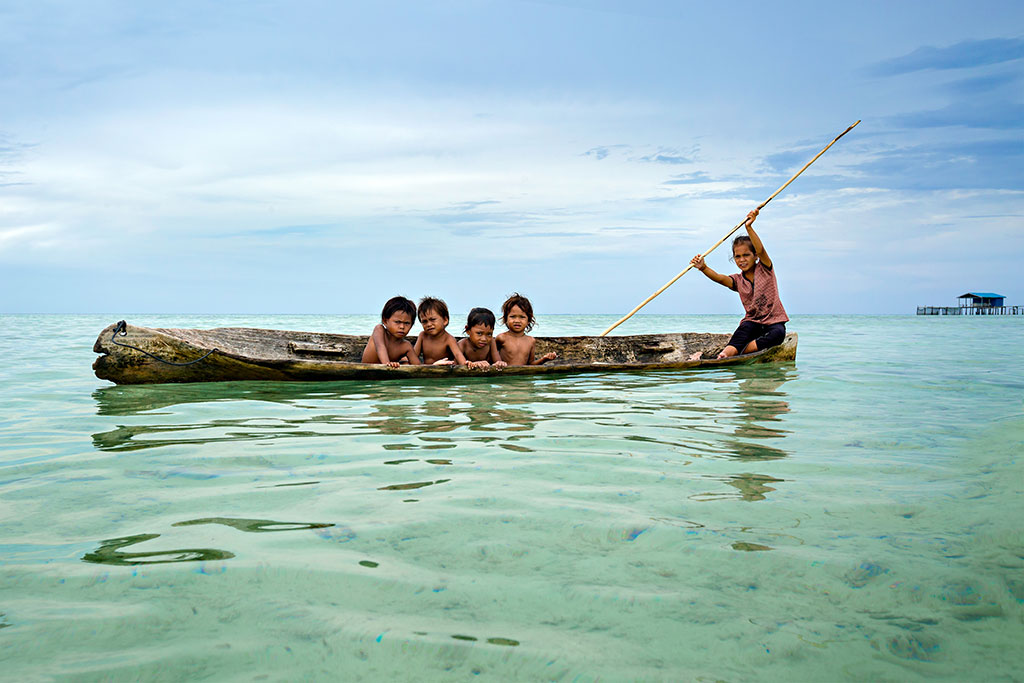
THE SEA NOMADS
The Bajau traditionally reside in small boats topped with thatched roofs to protect them from the elements. They are born and die with the tides, sailing day and night, using their fishing skills to make a living. This is how they earned the title of the “nomads of the seas.”
A Useful Evolution
The Bajau continue to develop their intuitive knowledge of the oceans. Not only are they adept sailors, but they’ve also evolved to hold their breath longer and dive deeper than most other humans.
A 2018 article in The Atlantic, reported that the Bajau are genetically connected to their environment. Their spleens are up to 50% larger than other homo sapiens.
The spleen’s primary purpose is to act as a blood filter. Under normal conditions, the organ stockpiles oxygen-rich red blood cells. Yet, when a person stops breathing the spleen contracts and evacuates the cells to boost oxygen in the body.
People with unusually large spleens are also predisposed to surviving longer in oxygen-deprived environments such as underwater or on a high mountain peak.
I was curious to learn more about these people who live their lives pulled by the ebb and flow of the tides.
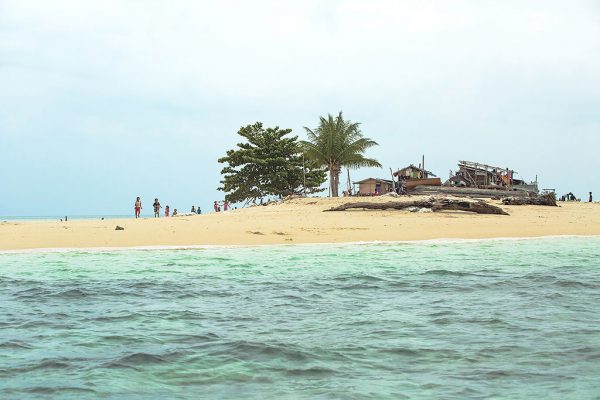
The Arrival
When I docked at Tabbalanos island, I saw in the distance, an island lost in the turquoise horizon.
The boat dropped anchor, and I waded through the water for the final few meters to reach the beach. A single palm tree pointed the tips of its leaves toward the sun.
Immediately, I was struck by the magic of the place.
The smell of salt, the smooth sand, the turquoise waters; all were almost completely unmarred by man’s touch. A few small bungalows had been built on the beach, where otherwise there was only driftwood and sea.
I had just noticed a swing hanging on one of the tree’s branches when a group of children came running out towards the boat.
I was greeted by dozens of smiles, as the small group of children gathered around me. Intrigued by my presence, they chirped to each other in a mix of Sama-Bajau and the giggling complicity of childhood. I bought a packet of biscuits at the one shop present on the island and offered them to the kids. The rare treat overjoyed them.
The children instantly warmed up to me and my camera. Yet, it was when they lost interest and returned to the water that I caught a glimpse of their daily routines.
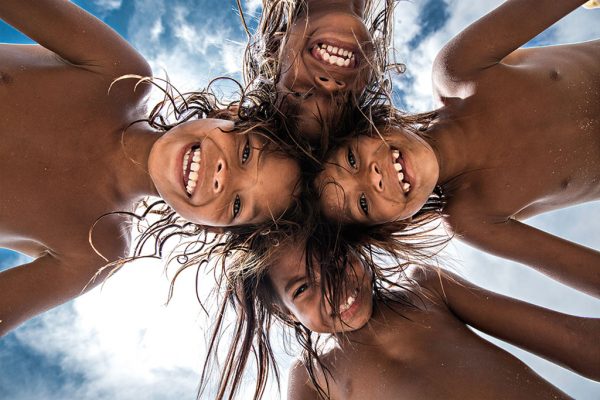
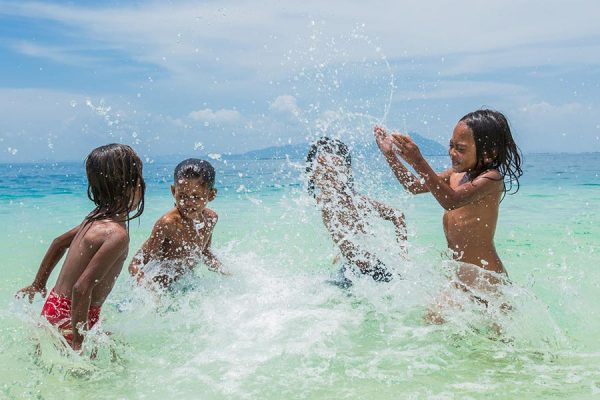
The Bajau are known worldwide for being the ethnic group who spend the most amount of time in the water. Real mermen and women, who only feel whole when they’re in their element: the ocean.
A LIFE LIVED ON WATER
Eleven small houses were neatly scattered between land and the open sea. Karim told me that each family in the community had approximately five children.
Women typically give birth on land in huts that are built on stilts to protect them from the waves. The Bajau who remain in this environment have no known knowledge of reading or writing. Life is entirely organized around fishing.
From the smallest children who can swim better than they can walk, to the elderly, everyone finds their place in the fishing trade.
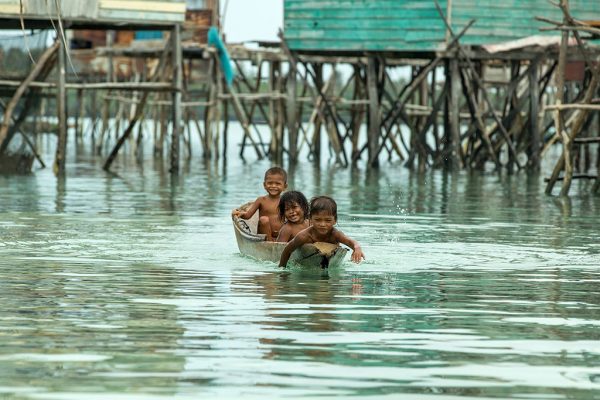
Young children are constantly on the boats, learning how to dive or swim. Those who have reached the age of 8 are already busy hunting.
The Bajau don’t count their ages in years. What matters is the present moment— health, the weather, the bounty of fish that come in (or don’t).
I took out my camera and captured each moment. I was in awe of this island and its inhabitants who were so totally at peace with their environment.
For four days, I traveled with Karim from Mabul Island to Omadal, Sibuan, and Maiga to see the Bajau at work, play and rest. Some of the islands, such as Tabbalanos, are not even referenced on the internet. But this isolation is exactly what helps preserve the tranquillity of the inhabitants.
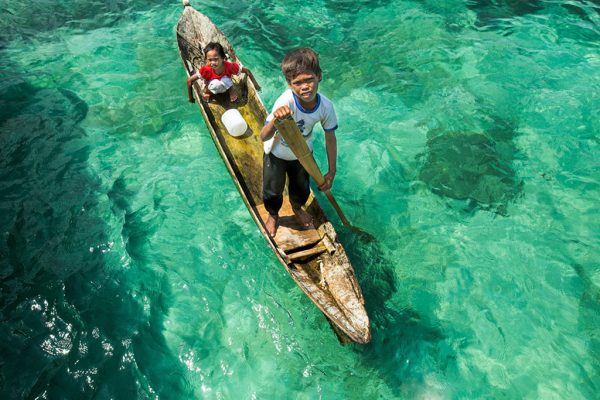
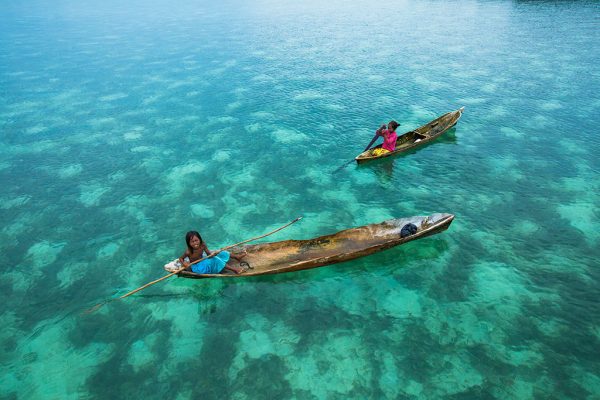
The village of Tatagan truly created a sense of the union between the Bajau and the sea. Rather than building their stilt homes on the sand, the houses were built directly over the lagoon. I met a Bajau family who had fled from the Philippines a few years earlier to settle in this peaceful haven.
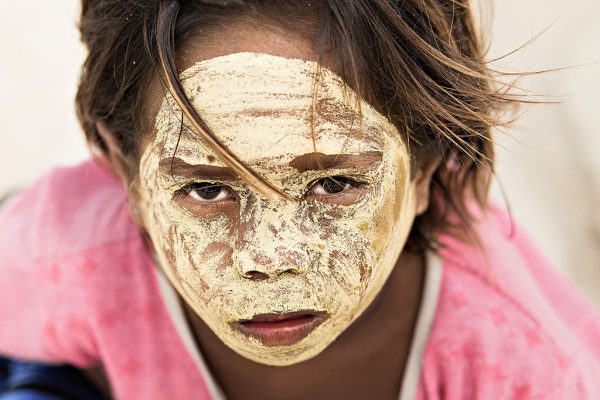
WHAT IS BORAK PASTE?
Borak is a locally manufactured turmeric paste, which the Bajau use every day to protect their skin from the sun.
In Omadal, in the Celebes Sea, there were seventy families living in bungalows. Each home was built on stilts and connected to one other by crossing bridges. This island was the most developed with small local food stands and even a football field.
When I arrived in Omadal, children with sun bleached hair greeted me. Some of the women had smeared their faces and those of their children with “borak.” The paste protects their skin from the intensity of the sun.
As in many parts of Asia, lighter skin is considered to be more beautiful. I was surprised to learn that even on this small island, women use Borak in the hope of being more attractive. Mothers also use it to protect the skin of their children.
I noticed a boat heading towards the beach loaded with provisions. After the sailor dropped off his wares, he filled his boat with pounds of fresh fish to take back to the mainland.
This truly mystical place, filled with simple beauty, represents the ability of humans to live in peace with their environment.
Reflecting on this trip continues to fill me with awe. I hope one day we might learn from the Bajau people to appreciate the simple things in life and live in a more connected way to our environment.









